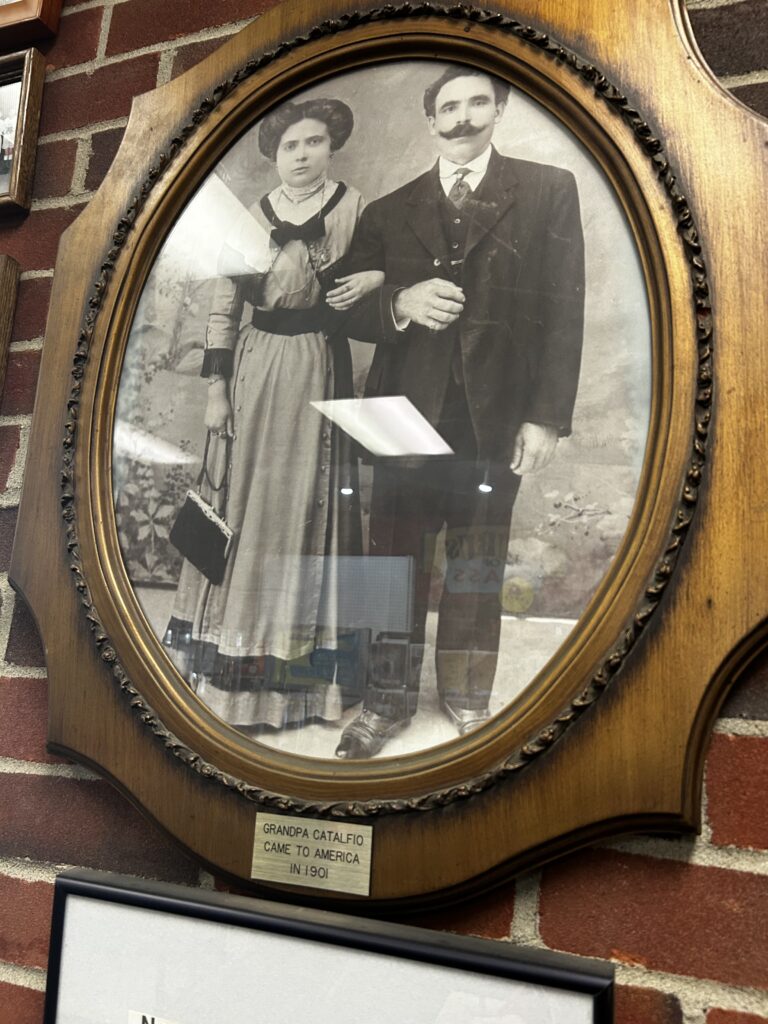I’ve been quote-unquote retired for a few years now, and I still think of the weekend as something special, look forward to it, get that Friday-on-my-mind feeling, and in fact think Friday night is the best night of the week. In Columbus, we got paid on Friday, and the table we assembled at the bar next door was long and loud. No separate checks. The rule was, you kept an approximate tally of your own damage as the night wore on and threw your cash on the table when you left, with a little extra for the tip. If you stayed until the end, you might get stuck with a bill for more than was on the table. Or, if everyone had overestimated, you might walk away winners. At a time I my life when I was on such a tight budget that I would put $5 in quarters in a mesh coin purse that I hung on a hook by my door — so I knew that whatever happened, I’d have bus fare to get to and from work, back in the days when the fare was 50 cents each way — walking away winners was like getting a little bonus.
I stayed late a lot, but mostly because I so enjoyed Fridays. I still do.
This week, I had a Friday dinner date with the friend I dogsit for. This was my thank-you for a week of service in the coldest week of the year, plus cleaning the coffee pot, a gripping take you might recall from a few weeks back. We went to She-Wolf, a spot that specializes in Roman cuisine. Had a pasta thing, and a fish thing, and gelato. It was all delicious, and it was a perfect Friday night. The rest of the weekend? Sunny, warmish, nice. Bought eggs, was thankful I already filed my taxes, ate too many jellybeans. Went to the library. The usual.
And I missed “The Ten Commandments,” but Alan is no fun to watch it with. You need to make it a party, with at least two gay men and lots of people who can say funny things about the next big moment coming up onscreen. Alan just thinks it’s dumb.
“THE TEN COMMANDMENTS” IS NOT DUMB.
OK, enough. Another thing I tried to do this weekend, and should do on more weekends: Pay no attention to whatever Tubby is up to. I stay informed, but there’s a limit to how much of this shit I, or anyone, can take. I go back and forth with my friends who practice 100 percent ignorance — and I stress that I mean “ignoring the news,” not actively cultivating stupidity — about how responsible that is. Some news will always break through, but I think to be an engaged citizen, you have to be well-informed. That said, I understand the agita that being well-informed causes mere mortals these days. I think my solution is mini-breaks. And I definitely think it’s wise to avoid shit like this (gift link reluctantly extended):
What do you wear for your first trip to space?
If you are like most people, probably whatever spacesuit or astronaut outfit the company (or government agency) you are flying with provides. However, if you are Lauren Sánchez — journalist, pilot, children’s book author, philanthropist and fiancée of Jeff Bezos, the second-richest man on the planet — you have another idea. You think, “Let’s reimagine the flight suit.”
Yes, it’s a liberally illustrated, ass-smooching feature on what Jeff Bezos’ arm candy has “reimagined” for what’s supposed to be an 11-minute trip on her boyfriend’s spaceship, and it’s about as gross as you’d expect, with quotes like this, from the designer:
“Simplicity was important, and comfort, and fit,” Mr. Garcia said. “But we also wanted something that was a little dangerous, like a motocross outfit. Or a ski suit. Flattering and sexy.”
I’ll say this for the :::checking::: children’s book author: She knows how she caught her boyfriend’s eye, and she means to keep it, if it takes all the lip filler in the world to do it.
Now, here I am getting agita again. Let’s do some yogic breathing and try to start the week off right. Happy Monday. In just four more days, it’ll be Friday.






















